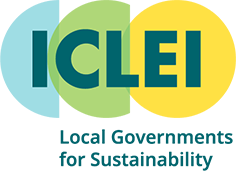City of Sydney
Australia
About
Sydney is located on Australia’s east coast and is the country’s first declared and largest city - it accounts for 19% of the Australian population with over 4.5 million residents. More than half of Australia’s top companies and over 500 multinational regional offices have headquarters in Sydney, and its economy accounts for 1/4 of the national GDP. In 2008 Sydney launched its “Sustainable Sydney 2030” plan, which calls for the growth of green industry and the reduction of greenhouse gas emissions alongside the fostering of an international cultural and economic environment. In accordance with the plan, the City is currently working to execute its energy master plan, which aims to derive 100% of its electricity, heating, and cooling from renewable sources by 2030.
Sustain Profile
In 2008, Sydney enacted the Sustainable Sydney 2030 Vision in order to cope its most urging problems and address strategies to continue attract human capital: as Sidneysiders wanted the city to be Green, Global and Connected, they created a 10 targets strategic plan, relative to 2006 standards, with the municipality. 1) 70 % GHG emissions´ reduction; 2)100% electricity and 10% water´ supply produced either via recycling or locally; 3) 48000 additional dwellings; 4) 7.5 % of social plus 7.5% of affordable housing; 5) 97000 + jobs; 6) public transport trips increased to 80%; 7) of which, 10% by bike and 50% by pedestrian movement; 8) an individual maximum distance of 800 metres for food markets, health services, childcare and cultural infrastructure from home; 9) a maximum of three minutes walk from the nearest green space; 10) 45% of people being trustful with others, enhancing social cohesion. In 2011, the State of the City revealed important results, such as: 13 solar water heating, as well as 24 photovoltaic, panels installed in City buildings; 200000 new tress planted; a 50% increasein energy efficiency by LED street lights´ installation; 18% GHG emission reduction; the equivalent of 142 Olympic swimming pools of saved water; 60% of commercial use carbon emissions reduction. Transport has been the other side of the coin, as 1/3 of the municipal area is dedicated to driving and parking and public transportation accounts for just 26% of the total. Furthermore, traffic levels are forecast to rise by 23% by 2026 and cost the community 3 billion euros a year: way unsustainable, if we think that half of the average trips cover less than 5 kilometres. Thanks to the creation of the Inner Sydney Regional Bike Network, the municipality would then generate 3.88 $ for every $ invested in alternative transport, de facto delivering a 508 $ million net benefit (in the next 30 years), driving to a reduction of 4.3 million car trips every year. In just three yearg, big results have been achieved: there are some short-term targets to reach, among which we find: by 2015, to recycle 70 billion litres of wasterwater per year; by 2017, to build 200 kms of bikeways; by 2020, to completely become carbon neutral; to expect bike use increase by 71% (in 2026).













